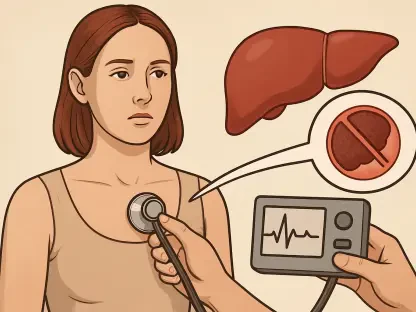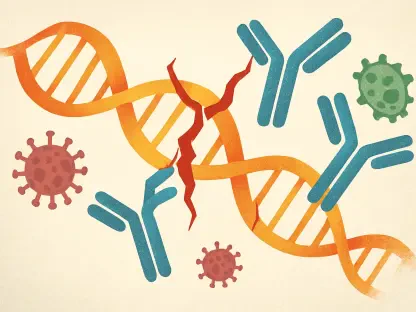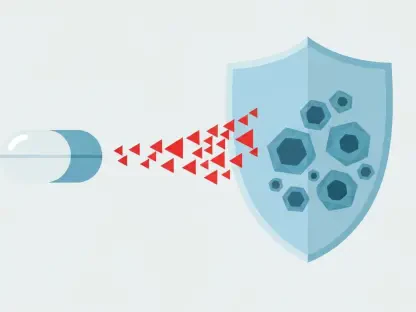New research shines light on position-specific hallmarks of cancer, diving deeply into the contemporary understanding of cancer and focusing on the specific expression patterns of cancer hallmarks within tumors. The fundamental question it addresses is, “What is a tumor?”—a crucial query when aiming to treat cancer effectively. Our understanding of cancer has evolved from viewing it as a homogeneous cluster of malignant cells to recognizing it as a heterogeneous and hierarchical structure composed of various cell types. The recent focus has shifted towards identifying and understanding the hallmarks of cancer, which are characteristics that, when activated in a cell, propel it towards malignant transformation.
To date, 13 hallmarks of cancer have been identified. These hallmarks are characterized by the expression of specific genetic pathways detectable in laboratory settings through genomics tools. Prior research established that not all cells within a tumor exhibit the complete set of hallmarks, prompting further investigation into the patterns of hallmark expression and their implications. This investigation aims not only to enrich the fundamental understanding of tumor biology but also to pave the way for more effective and personalized cancer treatments.
Exploring Hallmark Expressions Within Tumors
A team led by Dr. Eduard Porta from the Cancer Immunogenomics group at the Josep Carreras Leukaemia Research Institute (IJC), along with other renowned institutions such as the Barcelona Supercomputing Center and the Germans Trias i Pujol Research Institute, conducted a groundbreaking study to explore hallmark expressions within tumors. The study, published in the journal Cell Reports, examined 63 tumor samples from ten common malignancies, including breast, lung, prostate, and colorectal cancer. Dr. Mustafa Sibai is noted as the lead author of the publication, which emphasizes the collaborative nature and the significance of this research endeavor.
The novel approach taken by this research focused on identifying the different functionalities of each cell within a tumor based on hallmark expression rather than cell type. This method revealed that malignant cells typically specialize in promoting tumor growth, whereas non-cancerous cells within the tumor microenvironment contribute to immune system suppression or hinder the delivery of anticancer drugs, among other functions. By looking at the cellular functionality through the lens of hallmark expression, the research provided a more nuanced understanding of tumor dynamics and interactions within the tumor microenvironment.
Positional Patterns of Hallmark Expression
Significantly, the study uncovered that the expression of different hallmarks tends to occur in cells situated in specific tumor regions, akin to patterns observed in tissue and organ development. These positional patterns are not random but follow a consistent arrangement across various tumors and possibly other cancer types as well. This discovery challenges the previously held notion that tumor cell distribution is random and instead suggests that spatial organization plays a pivotal role in tumor biology, mirroring developmental processes.
An intriguing aspect of the study was the discovery that hallmarks appear to influence one another, and the position of one hallmark can often be predicted by the presence of others. This finding indicates a shift from the traditional selection-based paradigm of tumor evolution to an ecological perspective, where cellular function, as represented by hallmarks, might play a central role. Machine learning algorithms were instrumental in identifying these predictable positional relationships among hallmarks, showcasing the potential of advanced computational tools in cancer research. The realization that hallmark positioning could be interdependent offers new insights into tumor strategy and evolution.
Tumors as Organized Ecosystems
Dr. Eduard Porta-Pardo, the senior author of the study, emphasized that tumors are not random assortments of cancer cells but rather highly organized ecosystems where different regions fulfill specific roles. Understanding these spatial patterns is crucial for identifying which tumors are more likely to respond to specific treatments. By framing tumors as structured ecosystems, healthcare professionals can better predict treatment outcomes and tailor therapies based on the distinct characteristics of each tumor region.
The study’s implications extend beyond academic discourse, profoundly impacting the clinical management of cancer patients. For instance, the team assessed whether hallmark expression patterns influenced the outcomes of 33 bladder cancer patients in the DUTRENEO trial. They found that variations in hallmark expression could explain the differing responses to adjuvant therapy, paving the way for more personalized therapeutic approaches in the future. Dr. Sibai highlighted the potential to improve therapy customization by identifying hallmark ‘hotspots’ linked to drug resistance. Such advancements could significantly enhance the precision and efficacy of cancer treatments.
Clinical Implications and Future Directions
New research illuminates position-specific hallmarks of cancer, delving into the modern comprehension of the disease and concentrating on the unique expression patterns of these hallmarks within tumors. It addresses the pivotal question, “What is a tumor?”—an essential inquiry for effective cancer treatment. Our perception of cancer has progressed from considering it a uniform mass of malignant cells to viewing it as a heterogeneous, hierarchical entity composed of diverse cell types.
Researchers now focus on identifying and understanding the hallmarks of cancer, which are features that, when active in a cell, drive it toward malignant transformation. To date, 13 hallmarks have been recognized. These hallmarks show specific genetic pathway expressions detectable in laboratories through genomic tools. Earlier studies have shown that not every cell in a tumor manifests the full set of hallmarks, spurring further research into their expression patterns and implications. This exploration aims to deepen the basic understanding of tumor biology, leading to more effective and personalized cancer treatments.









